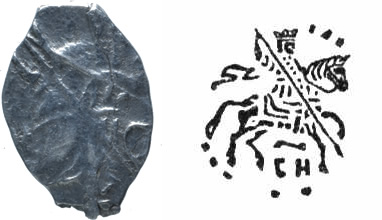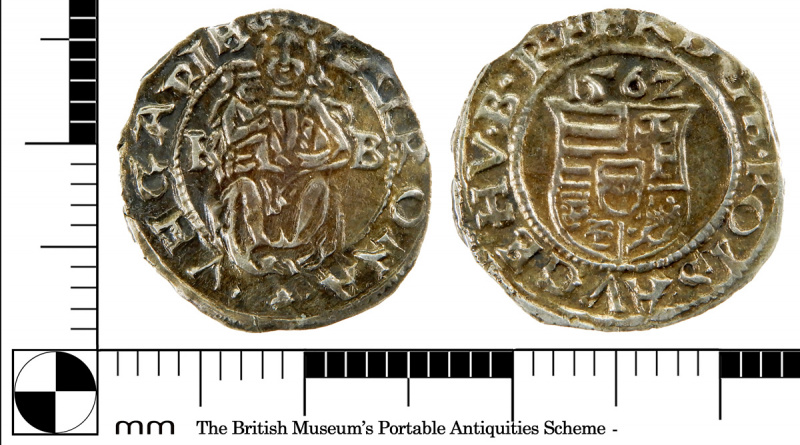PAS Finds (w/e 4/11/22) – Wire Money
PAS Finds (w/e 4/11/22) – Wire Money
My selection of the detecting finds recorded at the PAS in the week ended 4 November 2022. The featured find this week is a Russian “wire money” kopek.
Featured Find
Wire Kopek of Peter the Great
A wire Kopek or Denga (half Kopek) of Peter the Great. Wire kopeks in general are not particularly scarce coins but they are very rare detecting finds in the UK. There are less than 20 recorded at the PAS and only one other has been attributed to Peter the Great. It has been designated a Find of Note of Regional Importance.
So called “wire money” coins are made from silver wire which was cut to weight and then hammered flat. As might be expected from the process the coins are quite crude, often too small for the legend and struck off centre.
History of Wire Kopeks
Coinless period
A unique feature of the coinage of Europe is that Russia went through a coinless period between the 12th and 14th century. Instead, there was a return to a barter system using objects such as beads and animal furs. For larger transactions, precious metal bars known as grivna were used. The word has survived in a modified form as the current Ukrainian currency, hryvnia.
Golden Horde to Ivan the Terrible
The process of producing wire money was introduced to Russia by the Mongols of the Golden Horde. The first coins were produced by Prince Dmitry Donskoy in the 1360’s. At first they were imitations of the Mongol coins with blundered or meaningless legends. From 1462, under Tsar Ivan III the coins changed to a fully Russian design.

The obverse bore the image of a horseman (usually carrying a spear) which is just visible in this find. The Tsar’s name and titles were on the reverse legend, over five or six lines. However, this wire money continued to vary in denomination and weight.
In 1533, Ivan III’s grandson, Ivan IV (Ivan the Terrible) became the grand prince of Moscow at the age of 3. Almost immediately, his mother, Elena Glinskaya reformed the currency. The weight of the coin was standardised at 0.68g and became known as the Kopek. The origin of the name is disputed but the most popular theory is that it comes from the Russian name for the spear (“kop’yo”) carried by the horseman on the obverse.
Peter the Great
The design of the Kopek would stay the same, except for changes of Tsar’s names and titles on the reverse, until Peter the Great. Peter appreciated that the current monetary system was becoming increasingly unworkable but was aware of the failed attempts of his father to introduce copper currency in 1654. This had led to the so called “Copper Revolt” of 1662. Peter decided to gradually phase out the wire money; it was produced to a weight of 0.38g until 1698 and then reduced to 0.28g until production ceased in 1718.
Reading the legend
Even when the the Kopek was first introduced the flan was often too small for the entire legend. As the weight of the coin reduced so did the available space and by the time of Peter the Great’s latter coinage only a small part of the legend could be seen. As the obverse remained largely unchanged throughout this can make identification difficult. A further problem is that the legend is in old Russian Cyrillic and a further issue is that words are not separated and can be split over two lines.

Photo (modified): Durham County Council CC By SA2.0 (modified)
Have a look at the legend on the found coin. The key three visible characters are the “ПЕM”. The “П” is a “P” and the “M” is a “T”; the “T” often has elongated downstrokes on the edges making it look more like an “M”. This gives the Pet of Petr and so it must be Peter the Great as he was the only Tsar named Peter.
The next line shows part of his second name, Alekseevich.
Full legend
The image below shows the full legend on the die with this find outlined in red. It shows how small the flan had become.

If the full legend were visible it would read some variation of ЦРЬ И ВЕЛИКIИ КНЯЗЬ ПЕТРЪ АЛЕКСЕЕВИЧЬ ВСЕЯ РОССIИ, which translates as Tsar and Grand Prince Peter Alekseevich of all Russia.






